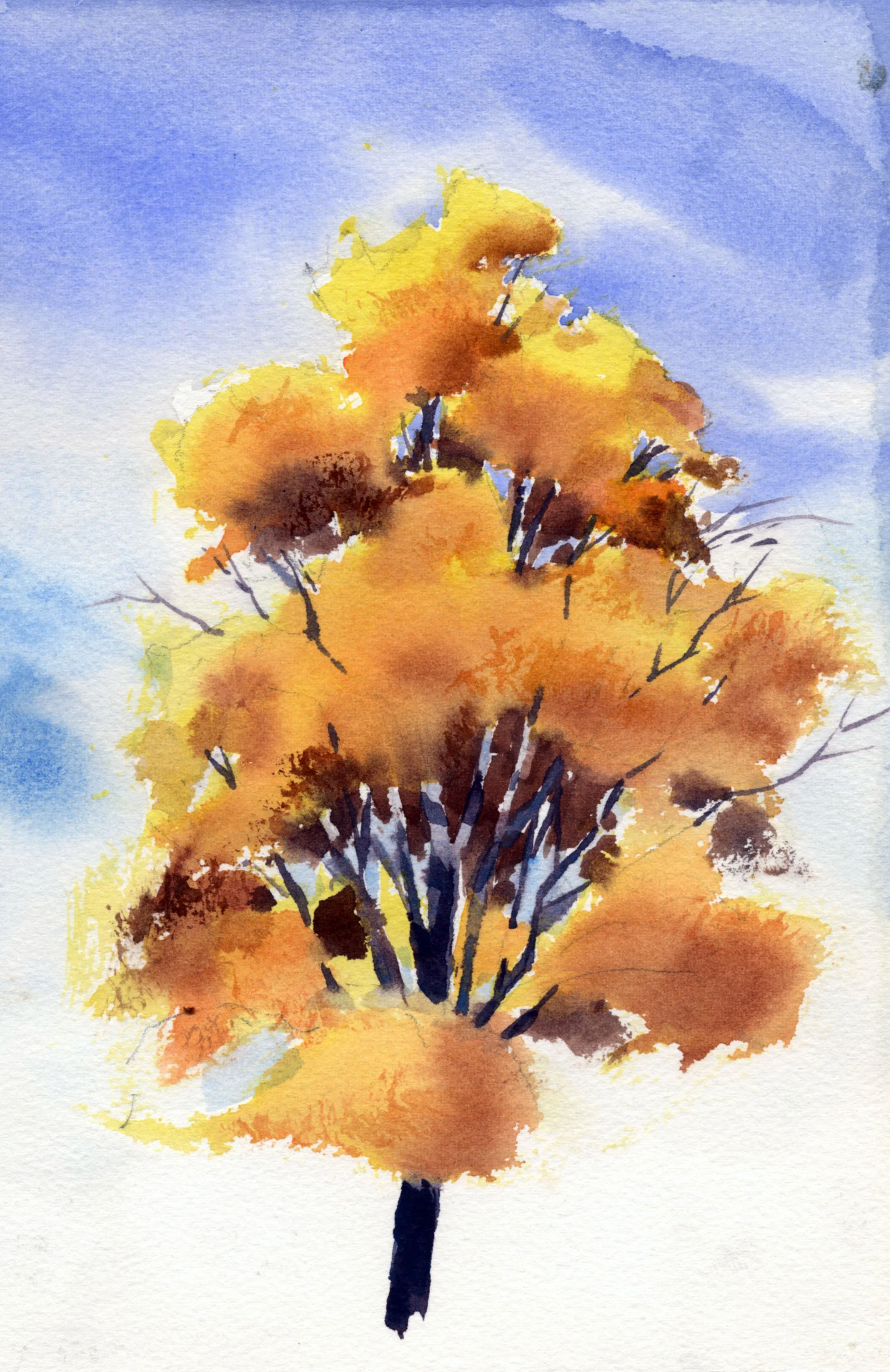Painting Trees - The Essential Technique
The One Secret For Great Tree Foliage
This one technique will change the way you paint trees and foliage.
The landscape is a very popular subject for artists. Landscape scenes are very approachable and appreciated by almost everyone.
TREES THAT LOOK ‘RIGHT’
Trees are the most prominent element in most landscape scenes. They seem simple but are surprisingly complex and varied, making more of a challenge than is usually expected.
There are a number of things to get right but one of the most important is the foliage mass. It is this mass shape that has the most capacity for representing the dimensional structure of the tree. As they are the stars of most every landscape scene, it is essential to create the 3D illusion on the shapes that represent trees.
Major branches of trees generally sprout at spaced intervals. These branches terminate in smaller branches and twigs, which form the outer contours of the tree. This is where most of the leaves grow. The masses of leaves form layers that overlap each other from top to bottom, side-to-side, and front to back.
Overlaps in the layers along with shifts and contrasts in value are enough to create the appearance of three-dimensional form.
No Lollipops!
Make sure your trees are not evenly divided, spaced or weighted
ASSYMMETRY
Asymmetry is a funny word but it basically means that the object or shape is not easily divisible into equal halves. For trees, this means no nearly round ‘lollipop’ trees. Instead, the shape should be uneven, have gaps and perhaps a little heavier on one side versus the other.
MAKING IT EASY
One of the most common problems when painting in any media is making things more difficult than they need to be. When painting trees, this problem often shows up in our choice brush and technique more than anything else. We tend to think of foliage as just masses of individual leaves. This is correct in a literal sense, but generally drives us to use small brushes and a ‘dabbing’ technique intended to paint almost every leaf separately and individually.
A better, easier approach is to paint the foliage masses as large shapes. There are two advantages to this approach : first, trees are easier to paint; second, the large foliage shapes become part of the compositional structure of the painting.
THE ESSENTIAL TECHNIQUE
There is one technique and a couple considerations that will make this approach work well.
The technique is not difficult but may seem uncomfortable when it’s new. It simply involves twisting and turning a large brush while moving over the surface of the paper. I like to use flat brushes, but rounds work as well.
Think Mass Shape
A better way to paint trees - mass in the foliage as a single large shape.
There are two important considerations. The first is that the underlying wash must be very wet. You’ll be covering large shapes and mingling additional colors into the washes.
The short video tutorial below steps through the process and key points.
We have a premium, course on painting Autumn Trees & Foliage. It covers the techniques and methods in-depth. You’ll paint three different autumn trees for practice and then a complete autumn landscape scene. Learn more



